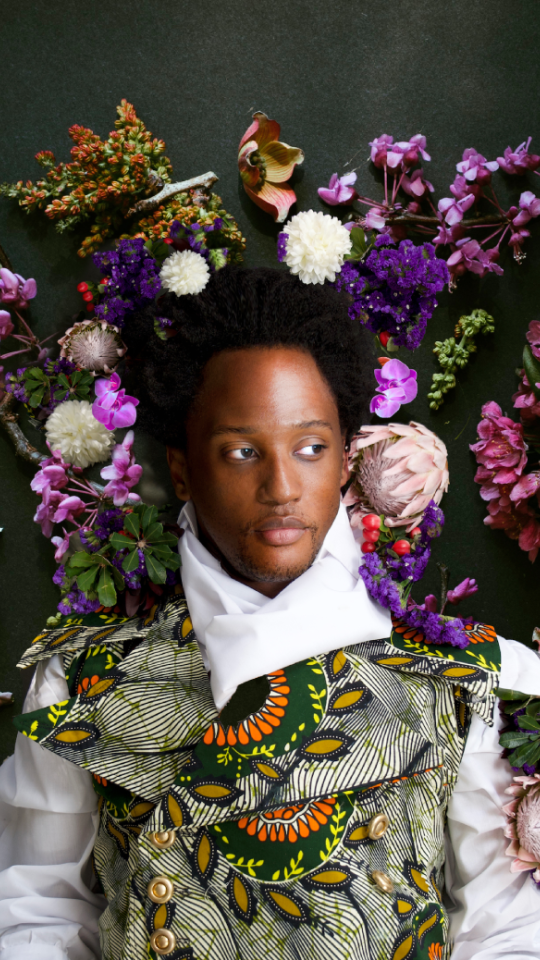Tamary Kudita is a multi-award-winning fine art photographer exploring African identity and cultural duality. A 2017 graduate of Michaelis School of Fine Art, she made history as the first African to win the 2021 Sony World Photography Awards' Open Photographer of The Year for her series 'African Victorian.' Her accolades include the Harvard University J.M.D Manyika Fellowship (2023) and nominations for the James Barnor Prize (2024). Notable exhibitions include solo shows at Art Basel Miami and group shows at the Investec Cape Town Art Fair and Photo Vogue Festival Milan. Featured in BBC News, CNN International, Forbes, and Vogue Italia, her work is held in permanent collections including The Art Fitchburg Museum, The Betsy Gallery, and AMC's Parish series.
If you’re interested in purchasing a piece please see the concierge, call 305-531-6100 or email [email protected] or [email protected] for more information.
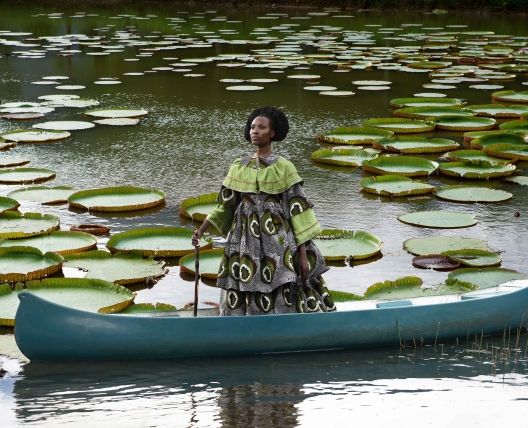
Unframed Size: 47.18" x 31.85", $4,000
Series of 15 + 2 Artist Proofs
In this image I aimed to create a fantastical reality where the sitter was a centrepiece to a grander narrative. The staff is symbolic of authority, dominance and presence which are sometimes words which are associated with women. The title of the piece lotus is most emblematic of the faith within ourselves.
- Tamary Kudita
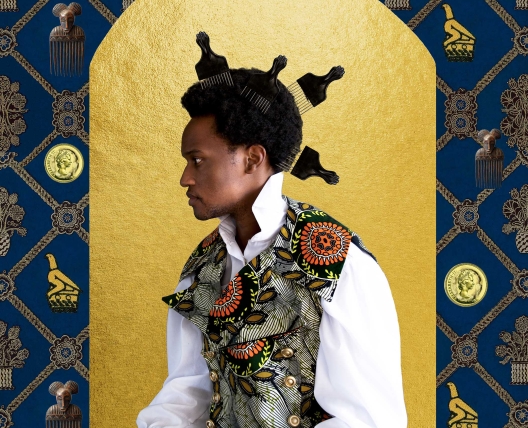
Unframed Size: 47.18" x 35.07", $3,500
Series of 15 + 2 Artist Proofs
In this image I examine the beauty of black hair and how it’s gone under significant changes in order to arrive to this point where we celebrate it in all its glory. The afro combs are also significant in how the heritage of our hair has been shaped. I also incorporate coins as means of unpicking an in-visible system which creates social structures of inequities. I create a backdrop which incorporates the Zimbabwean bird motif together with old Zimbabwean coins with the late queen Elizabeth’s face on them, as a way of commenting on misfortunes of life which resulted in a subversion of power dynamics. I also implore the idea of hair as a currency which has shaped our contemporary realities.
- Tamary Kudita
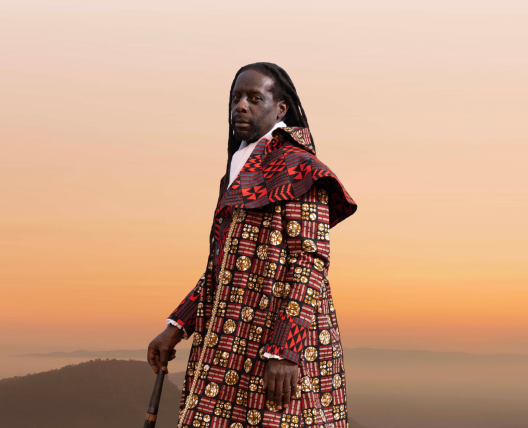
Unframed Size: 47.18" x 31.14", $3,000
Series of 15 + 2 Artist Proofs
This sitter in this image ‘Zvidzai’ stands to represent the all the kings who were in the kingdom of Zimbabwe and it’s dynasty who created states and empires of the Zimbabwe plateau as early as the 1500s.
- Tamary Kudita
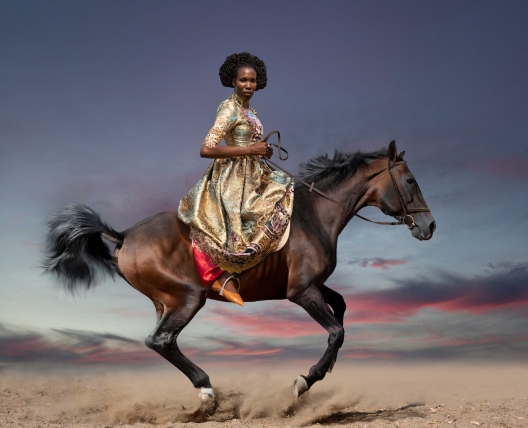
Unframed Size: 46.18" x 43.29", $3,500
Series of 15 + 2 Artist Proofs
This image is named after the Zimbabwe independence. The sitter in this image ‘Rosebud’ stands to represent the Zimbabwean female war veterans who went unrecognized and unseen. Being drawn to liberation movements I drift to romanticism stylistically to achieve the drama which epitomized pre-colonial Zimbabwe. I also interrogate the meaning embedded in statues in the way they assert their dominance and presence through a concrete visual language. I aim to highlight female heroines in the exact same manner through emphasizing the grandeur.
- Tamary Kudita
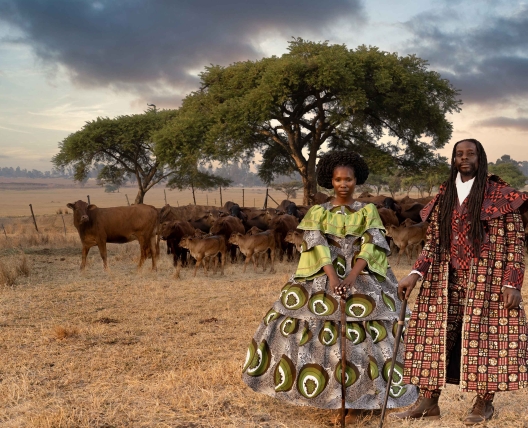
Unframed Size: 47.18" x 31.85", $3,000
Series of 15 + 2 Artist Proofs
In this image I aimed to depict the beauty of kinship through shared histories and ties to land. Furthermore, I explore the place of African fabric in the refashioning of cultural, racial and gendered identities as well it’s use as a vehicle with which to challenge structures of power that render certain people’s histories and cultural expressions invisible. My subjects wear African dresses that have been partially transformed into Victorian regal attire as a way of undermining the authority of simplistic readings of the black body.
- Tamary Kudita
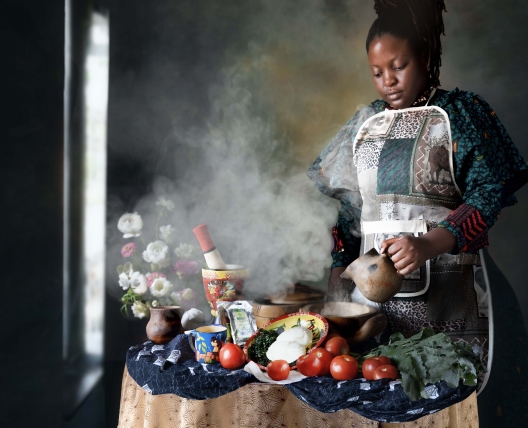
Unframed Size: 47.18" x 37.66", $3,000
Series of 15 + 2 Artist Proofs
This image was inspired by Vermeer’s painting titled "The Milkmaid." The title 'Muroora' translated to English means daughter in law. In this image I aimed to portray the sitter’s passion which is cooking as well as her side hustle which involves selling spices. Although she is in a domestic space her regality still shines through. The traditional food paired with the stylistic depiction of a Dutch still life was an aim to reinvent modernity by borrowing from the past. The stillness and paused movement presents a personal and intimate feel to the composition. This imagery presents an unseen private life with solidly coloured tomatoes, a plate of sadza and muriwo (mealie meal and veggies), and flowers all allow for a narrative to begin to unfold.
- Tamary Kudita
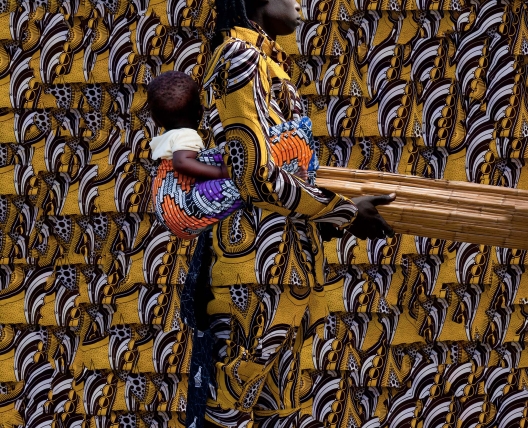
Unframed Size: 47.18" x 34.12", $3,500
Series of 15 + 2 Artist Proofs
This image explores the relationship between man and child. The act of carrying the child on his back and wrapping the cloth around his body plays on an image you don’t see every day.
It intentionally evokes the perception of masculinity and how it’s understood in today’s society. The image presents an intermediary where the private self and the public self coexist.
You will also notice the repeated motif of the Zimbabwean bird on the fabric which is a widespread symbol of the colony which serves as the backdrop of how the series unfolds.
- Tamary Kudita
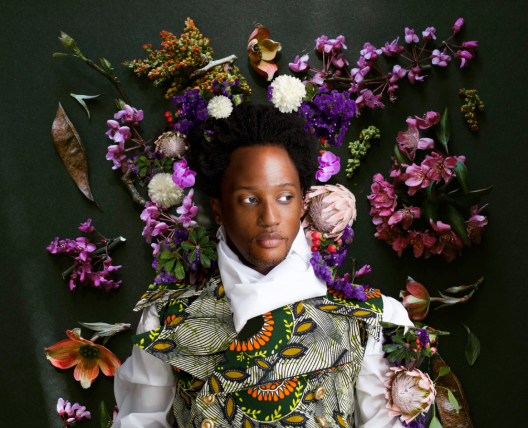
Unframed Size: 47.18" x 35.05", $3,000
Series of 15 + 2 Artist Proofs
I created this image as a concerted effort to capture feelings, beliefs, and thoughts of a black man in both his personal life and professional life. Some characteristics I gathered when I had conversations with the sitter ‘Chengetanai’ were that he is:
1) Faithful, Familial, and Resilient,
2) Creative, Faithful, and Independent,
3) Attentive, Connected, and Woke, and
4) Knowledgeable, Congruent, and Unapologetically Black, and
5) Responsible, Faithful, and Supportive.
By this process I aim to dismantle the constricting literary depictions of black men who equate selfhood with victimisation, isolation, and patriarchy. Instead, I reimagine black men whose identities are grounded in community, camaraderie, and intimacy.
- Tamary Kudita
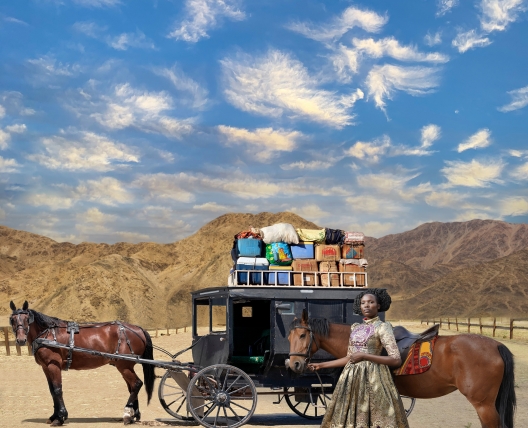
Unframed Size: 47.18" x 43.03", $3,000
Series of 15 + 2 Artist Proofs
This image takes on a romantic and a realistic approach to the theme of mobility. In this image I reimagined a period in history where excess was in style and inferior goods could be viewed as a necessity or a luxury for some. The excess load of goods on the carriage symbolizes the grim reality of the economy in third world countries paired by the fairy style aesthetic of the carriage and the horse. Whilst the pairing suggests a disassociation from the real world it is impossible to live in an ordered world that would withstand the forces of modernity. Within the patterns and objects lurks a metaphor which is rooted in colonialism and nationalism.
- Tamary Kudita
